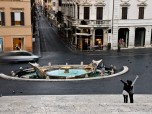The Capitoline Museums are also known as the Musei Capitolini. They were established during the fifteenth century and are located in Rome, Italy. The museums offer visitors a fascinating look at Roman archaeology and art. The different museums are located in two beautiful palaces which were designed by Michelangelo. The two museums are connected with an underground tunnel that can also take visitors to the historic Tabularium.
History
The historical past of the Capitoline Museums goes back to 1471, when a collection of ancient bronzes were donated to the citizens of Rome by Pope Sixtus IV. Since that time, the museums’ collections continue to grow and include many ancient Roman statues. They also have a large collection of jewels, coins and Renaissance and medieval art on display. The museums are operated and owned by the city.
There is a Emperor Marcus Aurelius statue in the center of the piazza where the museums are situated. This statue is a replica of the original. Numerous Roman statues were demolished during the Middle Ages, by orders of the Christian Church. The original of this statue survived because it was erroneously thought to be of Emperor Constantine. It was Constantine who officially made Christianity the state’s religion.
Many Roman sculptures are displayed in the museum. Two of the most well-known sculptures are the “She-wolf” which was created in the fifth century BC, and the “Spinario” which is a bronze statue that dates back to the first century AD. In addition, there is a large collection of sixteenth and seventeenth century paintings on display.
Palazzo Nuovo
The Palazzo Nuovo was constructed in the seventeenth century and had been originally designed by Michelangelo to harmonize with the Palazzo dei Conservatori. This palace has two floors that exhibit numerous ancient Roman artifacts such as statues, busts, sarcophagi, and many intricate mosaics.
There are many notable sculptures that can be seen in this area of the Capitoline Museums. Visitors can see the very famous “Dying Gaul” which is a copy of the original Greek statue called the “Discobolus.” The original statue of the famous Emperor Marcus Aurelius is also exhibited in this museum.
Other Parts of the Museums
The Galleria Congiunzione links the two museums together via an underground tunnel. This tunnel contains the Galleria Lapidaria, which is a group of epigraphs. The Gallieria is also connected to the Tabularium Gallery, which is an ancient building that is used to retain Rome’s official records.
During the Middle Ages, the Palazzo Senatorio was constructed atop the Tabularium. Some parts of the old temples can still be seen today. The Palazzo Senatorio or the Senatorial Palace, was built during the thirteenth and fourteenth centuries. Its double stairway was created by Michelangelo. Martino Longhi, designed the bell tower, and the current facade was created by Girolamo Rainaldi, and Giacomo della Porta. The Tabularium offers visitors beautiful views of the Roman Forum.





































